If you’re like me, one of the last things you think about when investing in a new venture, is taxes. It’s way more fun to think about all the potential luxury vacations you’ll take and the new cars you’ll buy, than to think about the taxes you’ll be paying.
Well, I’m here to tell you that, when you start out investing in real estate, it’s actually okay that taxes aren’t on your mind. That’s because, unlike when you invest in stocks and mutual funds, investing in real estate tends to make your tax bill lower, not higher.
Yes, you read that right. Investing in real estate can often help lower the amount of taxes you owe, even while you’re making great returns on your investment.
But how is that possible, you ask?
There’s actually a HUGE difference between the way the IRS views stock market gains and the way they view real estate gains. And that’s exactly what we’ll discuss in this article, specifically from the standpoint of a passive investor in a real estate syndication.
But First, a Disclaimer
Just so you know, I am not a tax professional, nor will I ever seek to become one (those people have really tough jobs). As such, the insights and perspectives provided in this article come from my experience only.
You should speak with your CPA for more details, and specifics on your situation.
Okay, now that that’s out of the way, let’s dive in.
The 7 Things You Should Know about Taxes and Real Estate Investing
Okay, get ready to have your socks knocked off. As much as taxes can knock one’s socks off, anyway.
Here are seven main things I think every passive investor in a real estate syndication should know about taxes:
- The tax code favors real estate investors.
- As a passive investor, you get all the tax benefits an active investor gets.
- Depreciation is hecka powerful.
- Cost segregation is depreciation on steroids.
- Capital gains and depreciation recapture are things you should plan for.
- 1031 exchanges are amazing.
- Some people invest in real estate solely for the tax benefits.
#1 – The tax code favors real estate investors.
You may have heard that more people become millionaires through investing in real estate than through any other path. And believe it or not, the tax code plays a big role in that.
You see, the IRS recognizes how important real estate investing is, in providing quality housing for people to live in. As such, the tax code is written in such a way that it rewards real estate investors for investing in real estate, maintaining those units, and making upgrades over time (more on these benefits in a moment).
So as a real estate investor, you’re like the IRS’s teacher’s pet.
Hey, there are worse things.
#2 – As a passive investor, you get all the tax benefits an active investor gets.
This is a big deal. This means that, even though you’re not actively fixing any toilets or climbing on any roofs, you still get full tax benefits, whether you’re an active or passive investor.
This is because, as a passive investor in a real estate syndication, you invest in an entity (typically an LLC or LP) that owns the property, and that entity is disregarded in the eyes of the IRS (these entities are sometimes called “pass-through entities”).
That means that any tax benefits flow right through that entity, to you, the investors.
Note: This is different for investing in REITs. With a REIT, you are investing in a company, not directly in the underlying real estate, and hence you don’t get the same tax benefits.
Common tax benefits from investing in real estate include being able to write off expenses related to the property (including things like repairs, utilities, payroll, and interest), and being able to write off the value of the property over time (this is called depreciation).
Let’s focus in on this thing called depreciation.
#3 – Depreciation is hecka powerful.
Depreciation is one of the most powerful wealth building tools in real estate. Period.
Depreciation lets you write off the value of an asset over time. This is based on wear and tear and the useful life of an asset.
What is depreciation?
To give you a simple example, let’s say you just bought a new laptop. On day one, that laptop works great. Over time, however, the keyboard gets sticky, the processor slows down, and the battery barely lasts more than a few minutes. Eventually, the whole thing will go kaput and be worth very little, if anything. This is the essence of depreciation.
Essentially, the IRS is acknowledging that, if the property is used day in and day out, and if you do nothing to improve the property, that over time, the property will succumb to natural wear and tear, and at a certain point in the future, the property will become uninhabitable (just like when that laptop eventually dies).
As you can imagine, every asset has a different lifespan. You wouldn’t expect a laptop to last more than a few years. On the flip side, you would expect a house to still be standing several years, or even decades, later.
For residential real estate, the IRS allows you to write off the value of the property over 27.5 years.
Note: Only the property itself is eligible for depreciation benefits, not the land. The IRS is smart enough to realize that the land will still be there in 27.5 years and will still be worth the same, or more.
Here’s an example
Let’s say you purchased a property for $1,000,000. Let’s say the land is worth $175,000, and the building is worth $825,000.
With the most basic form of depreciation, known as straight-line depreciation, you can write off an equal amount of that $825,000 every year for 27.5 years. That means that, each year, you can write off $30,000 due to depreciation ($30,000 x 27.5 years = $825,000).
The reason that this is such a big deal is this. Let’s say, that first year, you make $5,000 in cash-on-cash returns (i.e., cash flow) on that property. Instead of paying taxes on that $5,000, you get to keep it, tax-free.
Wait, really?
Yes, really.*
*Disclaimer: This depends on your individual tax situation. Please consult your CPA.
That $30,000 in depreciation means that, on paper, you actually lost money, while in reality, you made $5,000.
Plus, properties acquired after September 27, 2017, are eligible for bonus depreciation, which can really amp up the tax benefits for that first year.
This is why depreciation is hecka powerful.
#4 – Cost segregation is depreciation on steroids.
But wait, there’s more!
In the last example, we talked about something called straight-line depreciation, which allows you write off an equal amount of the value of the asset every year for 27.5 years.
But, for most of the real estate syndications we invest in, the hold time is around just five years. So if we were to deduct an equal amount every year for 27.5 years, we’d only get five years of those benefits. We’d be leaving the remaining 22.5 years of depreciation benefits on the table.
This is where cost segregation comes in.
Cost segregation acknowledges the fact that not every asset in the property is created equal. For example, that printer in the back office has a much shorter lifespan than the roof on top of the building.
In a cost segregation study, an engineer itemizes the individual components that make up a property, including things like outlets, wiring, windows, carpeting, and fixtures.
Certain items can be depreciated on a shorter timeline – 5, 7, or 15 years – instead of over 27.5 years. This can drastically increase the depreciation benefits in those early years.
Here’s an example
Let me give you an example. And this one is based on a true story.
A few years ago, real estate syndication group purchased an apartment building in December of that year. That means that the investors only held that asset for one month of that calendar year.
However, due largely to cost segregation, the depreciation schedule was accelerated for many items that were part of the property, including things like landscaping and carpeting.
The K-1 that was sent out to investors the following spring showed that, if you had invested $100,000 in that real estate syndication, you showed a paper loss of $50,000.
That’s 50% of the original investment.
Just for owning the property for a single month during that tax year.
And, if you qualify as a real estate professional, that paper loss can apply to the rest of your taxes, including any taxes you owe based on your salary, side hustle, or other investment gains.*
*Again, this depends on your individual situation, so please consult your CPA.
This is a game-changer, folks.
#5 – Capital gains and depreciation recapture are things you should plan for.
You didn’t think that real estate investing would be 100% tax-free, did you?
Unfortunately, the IRS likes to be included in everything.
In real estate investing, the way they get their cut is through capital gains taxes when a real estate asset is sold, and sometimes, through depreciation recapture, depending on the sale price.
In a real estate syndication that holds a property for 5 years, you wouldn’t have to worry about capital gains taxes and depreciation recapture until the asset is sold in year 5.
The specific amount of capital gains and depreciation recapture depends on the length of the hold time, as well as your individual tax bracket.
Here are the brackets and percentages based on the new 2018 tax law:
- $0 to $77,220: 0% capital gains tax
- $77,221 to $479,000: 15% capital gains tax
- More than $479,000: 20% capital gains tax
For more details and the most up-to-date laws and info, I recommend you discuss the specifics with your CPA.
#6 – 1031 exchanges are amazing.
I mentioned above that when a real estate asset is sold, capital gains taxes (and often, depreciation recapture) are owed. However, there is one way around this. And that’s through a 1031 exchange.
A 1031 exchange allows you to sell one investment property, and, within a set amount of time, swap that asset for another like-kind investment property.
Doing so means that, instead of having the profits paid out directly to you, you roll them into the next investment. As such, you don’t owe any capital gains when the first property is sold.
Only some real estate syndications offer a 1031 exchange as an option. Often, the majority of the investors in a syndication have to agree to a 1031 exchange to make it a possibility.
Unfortunately, you cannot do a 1031 exchange on just your shares in the real estate syndication.
The sponsors must decide to do a 1031 exchange on the whole shebang. It’s all or nothing.
Every sponsor is different and approaches 1031 exchanges differently. If a 1031 exchange is something you’d be interested in, be sure to ask the sponsor about it directly.
#7 – Some people invest in real estate solely for the tax benefits.
The tax benefits of investing in real estate are so powerful that some people (namely, wealthier folks) do so purely for the tax benefits. You see, by investing in real estate, they can take advantage of the significant write-offs, and then apply those to the other taxes they owe, thereby decreasing their overall tax bill.
This is how real estate tycoons can make millions of dollars but owe next to nothing in taxes.
It’s perfectly legal, and it’s a powerful wealth-building strategy. And, you don’t have to be wealthy to take advantage of the tax benefits of investing in real estate. The tax code makes the benefits of investing in real estate available to every real estate investor.
Recap
Like I mentioned when I started this article, you don’t have to worry about taxes when investing in real estate, especially as a passive investor in a real estate syndication. In most cases, you’ll be able to make money via cash-on-cash returns, yet you won’t owe taxes on those returns due to benefits like depreciation.
To recap, here are the seven things I think every real estate investor should know about taxes:
- The tax code favors real estate investors.
- As a passive investor, you get all the tax benefits an active investor gets.
- Depreciation is hecka powerful.
- Cost segregation is depreciation on steroids.
- Capital gains and depreciation recapture are things you should plan for.
- 1031 exchanges are amazing.
- Some people invest in real estate solely for the tax benefits.
As a passive investor, you don’t have to “do” anything to take advantage of the tax benefits that come with investing in real estate. That’s one of the benefits of being a passive investor. You don’t have to keep any receipts or itemize repairs. You just get that sweet K-1 every year, hand that over to your accountant, and that’s it.
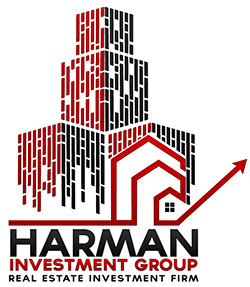
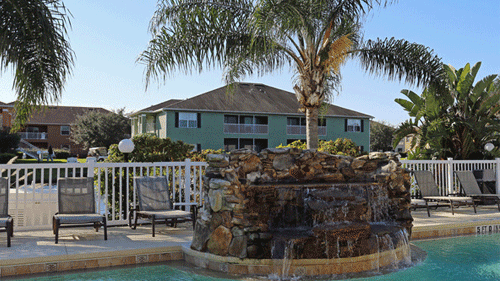


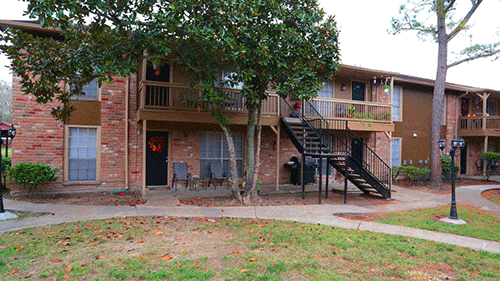
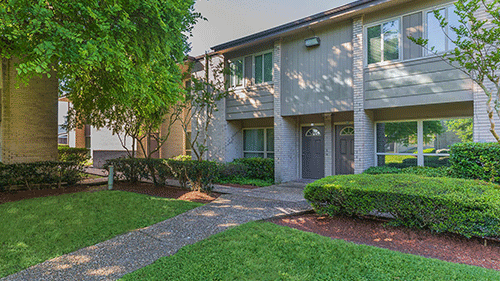
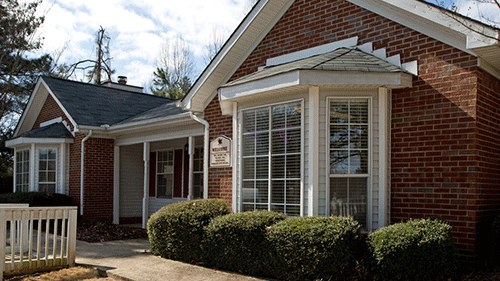


 In addition to the ideas mentioned previously, namely, adding laundry facilities and paid parking, there are lots of amenities that could be added to your multifamily property to keep positive cash flow.
In addition to the ideas mentioned previously, namely, adding laundry facilities and paid parking, there are lots of amenities that could be added to your multifamily property to keep positive cash flow.

